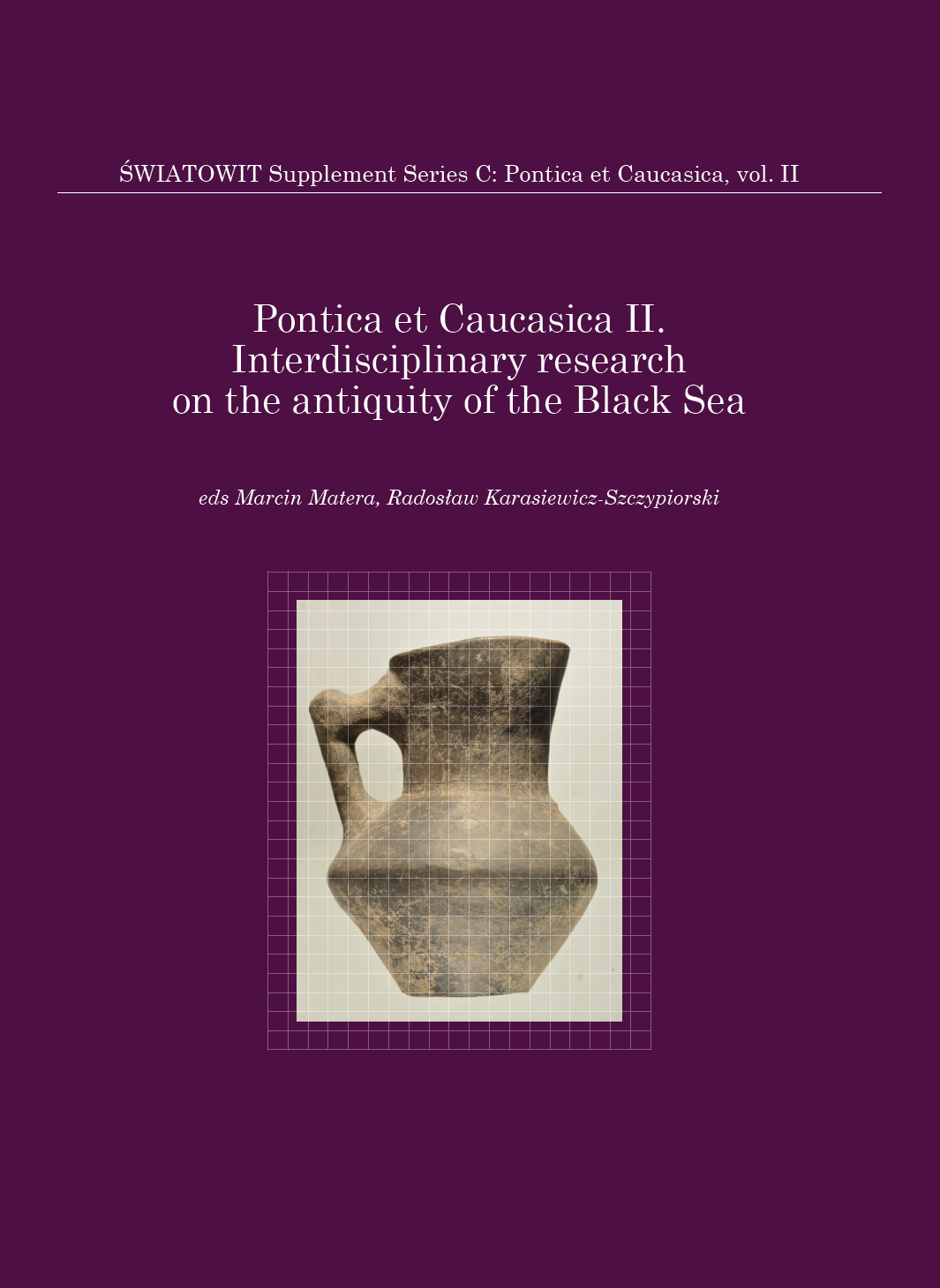Малоазийские фаянсы и китайский фарфор в быту турецкого гарнизона крепости Гонио-Апсарос (по материалам раскопок 2018 года)
Faience of Asia Minor and Chinese porcelain in everyday life of the Turkish garrison in the Gonio-Apsaros fortress (based on materials from the excavations of 2018)
Author(s): Irina R. Gusach, K. Kamadadze
Subject(s): Archaeology
Published by: Wydawnictwa Uniwersytetu Warszawskiego
Keywords: South-West Georgia; Gonio-Apsaros fortress; Ottoman garrison; faience of Asia Minor; Chinese porcelain; 16th–18th centuries
Summary/Abstract: During the field season of 2018, besides new details of the architectural ensemble of the Roman period, 13 refuse pits of the Ottoman garrison period (1547–1878) were discovered and explored by the international Polish-Georgian archeological expedition. The 11 pits contained material that proves that the inhabitants of the fortress of the Later Middle Ages used mainly mass glaze and unglazed pottery in their everyday life which were manufactured in the ceramic centers of Anatolia and the South-East Crimea, as well as unglazed pottery produced locally. However, Gonio’s senior Turkish army apparently could afford to have more sumptous, artistic and expensive dishes “on their tables“. Among the archeological finds of 2018, are few (slightly more than 20 pieces) fragments of painted faience of Asia Minor: so-called “Iznik” vessels (bowls, plates, jugs, vases) dated to 16th–17th century, and Kütahyan coffee cups of the 17th–18th century. Moreover, in the cultural layer of the Ottoman period, was discovered a fragment of a Chinese porcelain – painted cup of the Emperor Kangxi’s reigning period (the end of the 17th – the beginning of the 18th century).
Book: Interdisciplinary research on the antiquity of the Black Sea. Volume II
- Page Range: 205-218
- Page Count: 14
- Publication Year: 2021
- Language: English, Russian
- Content File-PDF

